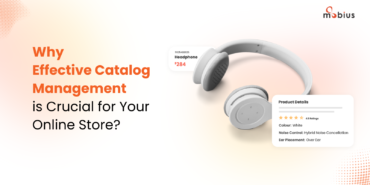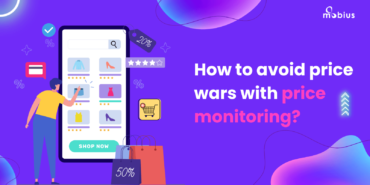Ecommerce SEO is a code most brands and retailers try to break for improved website ranking, visibility, and conversions. But, building result-driven ecommerce SEO strategies is not easy. Primarily, it is because brands often don’t know how and where to begin.
The first thought that comes to mind when discussing search engine optimization (SEO) is that you need to find a few relevant keywords and put them in the content. However, knowing how to find the right keywords, where to infuse them in your content, and how often to optimize them is a different ball game. And here’s where the real challenge begins for most brands and retailers.
Before we find out how you can work on your ecommerce SEO strategies to improve your website ranking and traffic, let’s find out what it is.
What is ecommerce search engine optimization (SEO)?
SEO in ecommerce is the process of improving your products or online store’s ranking in search engine results by including relevant keywords in the content. Your products and website will appear in the top search results, giving you more visibility and increasing conversions. Although SEO for ecommerce websites involves multiple techniques, finding and working with the right strategy remains a challenge for many businesses.
Study shows that moving up just one page in search engine results can boost a website’s click-through rate by 30.8%. Evidently, working on your ecommerce website’s search engine optimization can drive relevant and more traffic to your online store.
Let’s see why investing in a strong SEO strategy for your ecommerce website is the best thing you can do.
Why is SEO in ecommerce important?
Suppose you have a product on your website that customers actively search for online. But, your product content does not contain the particular search term customers use. This would lead to missed sales opportunities. You can imagine how seriously this issue affects the revenues of multiple ecommerce businesses worldwide.
With a powerful ecommerce SEO strategy, you would be able to find the exact keywords people are using while searching for a product or category. Moreover, you will understand how the relevant search terms for one product differ across different locations and demographics.
Customers hardly ever go to the second page of the search engine while looking for a product. A recent study shows that only 0.78% of Google users land on the second-page search results. So, how do you bring a website to the first page? We have a few practical SEO strategies for your website shared by ecommerce experts.
Five effective ecommerce SEO strategies for your website
1. Keyword research to identify relevant search terms
Keyword research is the first step in optimizing your website for better search engine ranking. For example, if a customer wants to buy cushions, they might use search terms like – “cushions for sofa” or “cushions for chair”.
Search engines match these keywords against product pages to determine relevancy and show the results to shoppers. Therefore, having the right keywords infused in your product content is essential. Other than short-tail keywords, it is also vital that your product pages contain long-tail keywords as well.
But, how do you find the targeted product keywords? There are many ecommerce keyword research tools available that you can use to find key phrases that would work best for your products. The only limitation here is that it is difficult for businesses to search keywords for every product in their vast catalogs manually.
On the other hand, opting for ecommerce SEO services could help you in multiple ways. SEO experts would identify the relevant keywords for your products by analyzing terms used by the target audience and competitors.
2. Detailed and information-rich product content
Ecommerce brands and sellers cannot improve their conversions simply by finding the relevant keywords and putting them in the content. Knowing precisely where to integrate the keywords into your product content is important. Moreover, you must consider the content’s quality, relevance, and completeness along with SEO.
The content on your product page should help the customers learn about the specifications of your product, all while being SEO-friendly. Once a visitor lands on the page, they should be able to find all the product information necessary to make a confident purchase. Search engines prefer quality content that is appropriately structured and formatted, ranking them higher.
Also, you offer a better customer experience by providing relevant information in a clean format like a bulleted list, short paragraphs, etc. This way, visitors can quickly skim through the product pages and move down the sales funnel.
3. Regular SEO audit of product pages
Today’s ecommerce market is quite dynamic, so it goes without saying that you should keep a close eye on your website’s traffic. By conducting an ecommerce SEO audit for your website, you would be able to analyze keyword performance for each page. This will provide data on which keywords work well for your website and the patterns related to these searches.
When optimizing your product pages with the latest high-ranking keywords, ensure that you include these keywords in the product titles, features, descriptions, and digital media assets shown on the page. Search engines also crawl through digital media information, looking for relevancy and showcasing the apt pages in the top search results.
4. Attractive product title tags and meta descriptions
The product listing title tag is the first thing any shopper sees when your product pages or website turns up in a particular search engine result. Search engines use title tags to determine if the page matches the user query. Product title tags are the primary ranking factors, especially for Google.
Remember, your title tags should be creative enough to attract shoppers and contain the most specific product keyword. Brands must also ensure that the keyword is at the beginning of these title tags, as customers often tend to read just the first few words before clicking on the link.
Another crucial aspect of any product listing is its meta description. Meta descriptions are two-liner content at the max that appear below the title tags in searches. They give a brief description of the product or the website, letting customers know what to expect on your page.
This plays another important part in getting your shoppers to click on the link and landing on your website.
5. Keyword and user-friendly URLs
Website and product URLs play a crucial role in improving the discoverability of your website. Instead of creating URLs that contain random letters and numbers, it is advised that you use the targeted product keyword. This way, you give context to the respective page and help customers remember the link better.
So, the next time a shopper wants to repeat purchase, they might remember the URL and directly type it into the search engine, successfully landing them on your website. A pro tip here for brands is to have some structure to these URLs. For example, you could include the categories on your website in the URL so customers can follow it easily.
Final thoughts
There certainly are more ecommerce SEO strategies to help improve website rankings effectively. Identifying the right set of techniques that work for your business and their deployment might not be as seamless as you think. Here, professional ecommerce SEO services can help you reach your goal of increased traffic and higher conversion rates.
Our ecommerce SEO and content experts analyze your website and the products offered to identify the gaps in your product content. They analyze your target audience and competitors to understand the search terms used for a particular product. Our content creation services ensure that your product pages have SEO-friendly, complete, and relevant information for a better online store ranking.
Visit our website and get in touch with our experts to take your ecommerce business to the next level.






